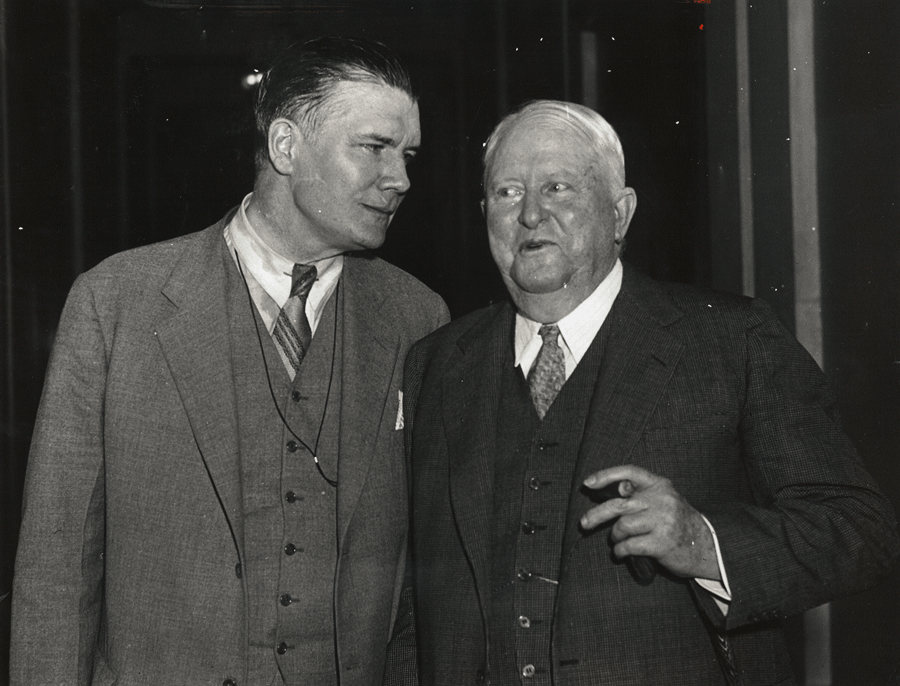INSTITUTE INDEX: The racist roots and fruits of the Supreme Court's Janus ruling

Vance Muse (left), a white supremacist and corporate lobbyist who led the fight for anti-union right-to-work laws in the 1940s South, with Texas lumberman John Henry Kirby. The recent Janus decision by the U.S. Supreme Court extends such policies to public-sector unions nationwide. (Photo via the Labor and Working-Class History Association's website.)
Date on which the conservative majority of the U.S. Supreme Court ruled that public-sector workers represented by unions have a constitutional right to pay nothing for that representation, reversing a 1977 ruling that upheld unions' rights to collect so-called "fair share" fees: 6/27/2018
The court's vote in the landmark case out of Illinois, titled Janus v. the American Federation of State, County and Municipal Employees Council 31: 5-4
Rank of the ruling — which deals a blow to unions' financial health and thus political clout — among the biggest threats to organized labor in years: 1
Number of states the ruling will affect: 22
Number of other states where unions already operate under such a free-rider system because their legislatures have enacted so-called "right to work" laws that bar unions from requiring non-members who benefit from representation to contribute to its costs: 28
Of the 13 Southern states, percent with right-to-work laws, which have their roots in extreme pro-segregationist and anti-communist elements in the 1940s South: 100
Year in which corporate lobbyist Vance Muse of Houston began pressing for right-to-work laws through his Christian American Association, using openly racist rhetoric: 1941
Year in which Arkansas and Florida became the first states to enact right-to-work laws following campaigns led by Muse's group: 1944
Year in which Muse said, "They call me anti-Jew and anti-nigger. Listen we like the nigger — in his place … Our [Right-to-Work] amendment helps the nigger; it does not discriminate against him. Good niggers, not those Communist niggers. Jews? Why some of my best friends are Jews. Good Jews": 1945
Factor by which union membership in the South increased in the 1940s, a period during which unions were challenging Jim Crow and campaigning to eliminate the poll taxes that Southern states used to bar African Americans and poor whites from voting: 2
By 1947, when Congress passed the Taft-Hartley Act restricting the power of unions, number of states that already had right-to-work laws on the books: 14
Year in which West Virginia passed its right-to-work law, the last state in the South to do so: 2016
Portion of unionized state and local government workers today who are people of color: 1/3
Percent who are women: 58
Rank of black women among the demographic groups that will be most affected by the Janus ruling: 1
(Click on figure to go to source.)
Tags
Sue Sturgis
Sue is the former editorial director of Facing South and the Institute for Southern Studies.
